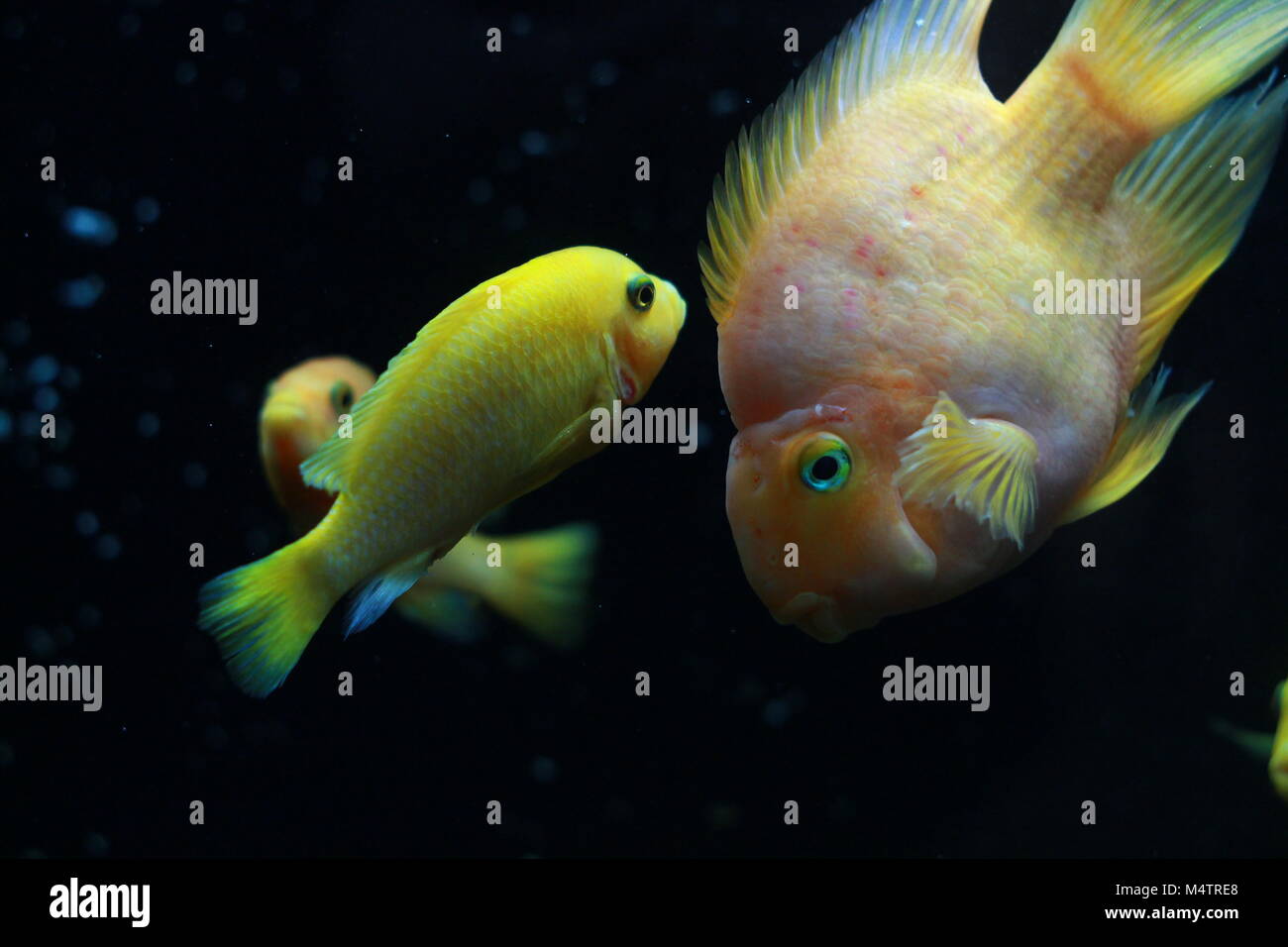

They start swimming in small groups employing their dorsal fins.! It’s very weird when they use their tail! Young specimens like to swim alone when they are adults. The inverted female totally changes her appearance and is usually very territorial, the behavior is as varied as her appearance is. Yes, it’s possible since the parrot fish have the peculiarity that they can change sex since when the male dies or for some reason disappears, the dominant female of the group proceeds to replace him, making the sex change and taking the functions of the boss of the collective. In some cases the groups are directed by a reproductive male also known as the super male who in most cases is a female who has reversed her sex.

It’s also common to see them making-up groups of up to forty specimens looking for food together in the vicinity of coral reefs. Parrot fish are very social animals that live in groups of several females submitted by a single male. they are common in the Caribbean and some rocky shores. The reef areas are their favorite, however some species are found in areas with seagrass. They are a very abundant species in tropical waters, also in subtropics, but they don’t inhabit deep waters. Parrot fish are distributed in the Pacific, the Indian, the Atlantic and the Red Sea mainly in warm waters. They usually live in transparent lagoons and offshore reefs and can submerge until they reach 30 meters deep. We invite you to read our article the anatomy of fish to learn about such an interesting topic It’s estimated that within a year, a fish is only able to turn a vast area of coral into sand. Parrot fish are highly prized due to their ecological impact on coral reefs, since they contribute to the creation of sediments in them. Parrot fish also have a dorsal fin of 9 spines, an anal fin with three and finally the pelvic fin has only one spine. They are teeth grouped in a compact package that fuse and give the beak shape. It’s worth mentioning that they have a parrot-like denture and hence the origin of their name. In some species the scales are so thick that it’s said that they can stop the impact of a spear. Red, blue, yellow, gray, brown and black are the most common colors in this family.

Their body is covered with large cycloid scales, that is, arranged so that their surfaces overlap each other, so that together they form a relatively smooth surface as well as bright and contrasting colors that often form a characteristic pattern of dots, spots and stripes.


 0 kommentar(er)
0 kommentar(er)
